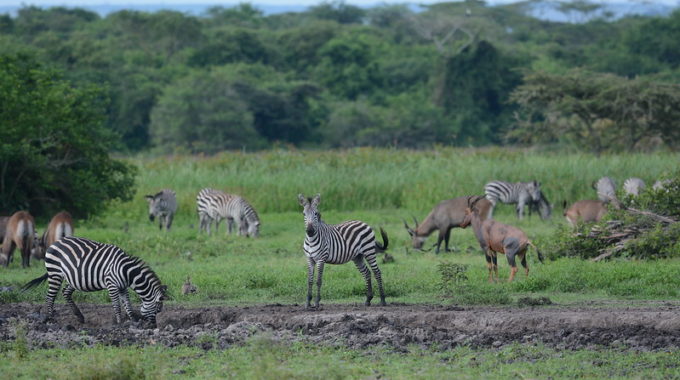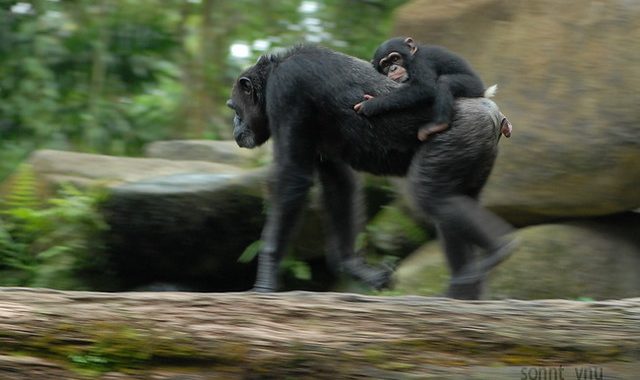Lake Mburo national park as a tourism destination. A variety of clients wish to…
The Shoebill Stork
The African Shoebill Stork
The shoebill stork also known as whalehead is a long-legged, large stork-like bird that derives its name from its large sized shoe shaped bill. They are one of the five most desired birds in Africa and due to the fact that it’s a stork-like bird, it has been classified among the ciconiiformes as a result of its morphology. But however, due to the fact that the adult shoebill are always grey and their young ones always brown, this genetic evidence classifies them among the pelecaniformes. These birds are found in Tropical East Africa around the large fresh water swamps.
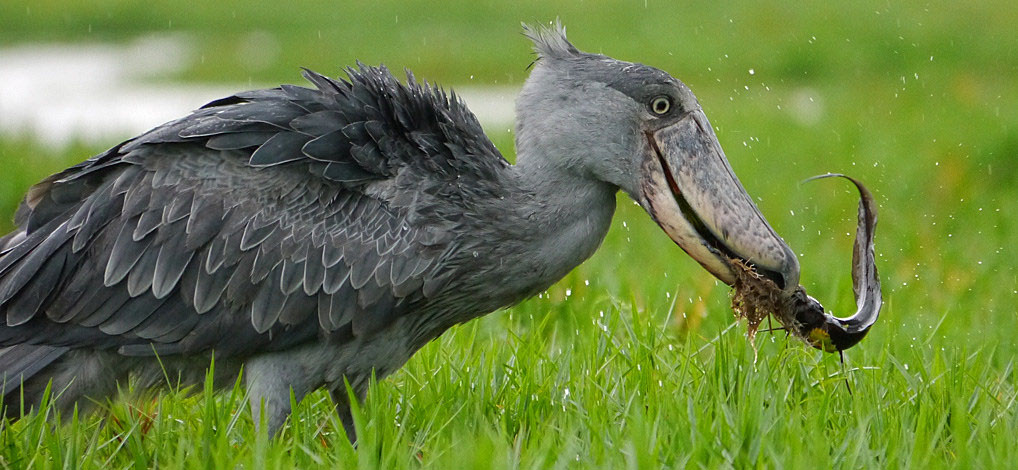
The shoebill is a slow bird that it does not even fly for more than 500 meters depending on each shoebill, their distance of flying ranges between 100m-500m especially due to its large nature and their flapping rate is about 150 flap per minute. As it flies, its neck draws back in other words, it’s retracted.
This bird can be identified because of its distinctive features from other bird for example; its feathers are medium blue-grey and its tail is the same color as its wings and when it flies, its legs extend straight back far past its tail, and when you view it at a far distance especially while it’s in its habitat, its size and wingspan make it appear different from other birds.
The shoebill stork birds are described as statue-like bird species due to the fact that they are fond of standing and staying still for a long period of time. They normally don’t like any kind of disturbances from humans therefor once they are disturbed by humans, the can even leave there nests and look for habitation elsewhere. But however, during their search for food and are in a tall grass area, they always seem less frightened of people in case they come around.
These birds are always attracted to fresh swamp waters that are poorly oxygenated and where fish frequently appear at the surface for breathe. Despite their large nature, they often stand and rest on floating vegetation where they always appear just like a Giant Jacana.
Their breeding; the lonely nature of the shoebill stork birds also applies to their breeding. A pair of shoebill birds breeds in an area of about 2-4 square kilometers far away from the other shoebills, they do not nest in colonies like the pelicans, storks, herons and some other birds. In the northern and southern regions, nesting starts just after the end of the rainy seasons, but in most central regions the shoebill stork birds start nesting, the period at the end of a wet season so that they can hatch at the beginning of the next wet season. These birds build their nests on floating platforms which are made out of aquatic vegetation and both the male and female shoebills are engaged in this activity of nest building. The built nests are always about1-1.7 meters wide and are also built out of aquatic vegetation. The shoebill stork bird lays about one-three eggs that weigh about 164 g and they incubate their eggs for almost 30 days but they rarely raise more than one chick. Both the male and female shoebills attentively guard their nestling though the female one is more protective and they feed their young ones in a way that they bring back their swallowed food right from the gullet then they directly place it in the bills of their young ones. The young shoebill stork birds develop feathers large enough for flying after about 105 days but can fly well at about 112 days.
The shoebill stork sound
Though these birds are always silent, they make awesome machine- gun noise often perform bill-cluttering displays at their nests during the nesting season as a means of communication together with their young ones and in this process the adult shoebills bring out high-pitched whining sound and a cow-like moo. And as the hungry chicks make begging calls for food, they produce sound just like human hiccups and at the sight of a “marabou stork”, the flying shoebill adult has been heard uttering horse croaks as a sign of confrontation.
The shoebill stork size
The shoebill birds are tall with a height range of about 110cm-140cm and of which some of them reach at a height of about 152cm. The length from the tail ranges from 100-140cm and their wingspans are always about 230-260cm. Their weight ranges from 4-7 kilograms, the male are always larger than the female with an average weight of about 5.6 kilograms and the female 4.9 kilograms. The upper ridge of this bird’s bill is about 18.8-24cm, this bill is generally a huge bulbous straw-coloured feature with erratic greyish markings. The sharp edges in the mandibles of these birds enable them to behead their prey and to also get rid of any vegetation after they have caught their prey, the upper mandible is strongly keeled and it ends with a sharp edge. The shoebills have abnormally large feet with a middle toe of about 16.8-18.5cm enabling them to stand on aquatic vegetation. They have broad wings with a wing chord length of about 58.8-78cm and their necks are relatively shorter and thicker unlike other long-legged warding birds like the herons.
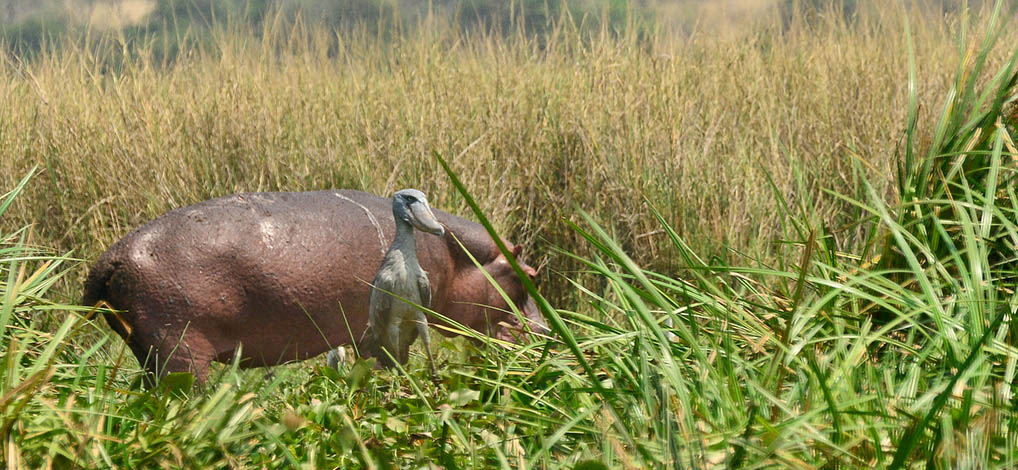
The shoebill stork feeding
The shoebills feed on prey such as fish for example fish like tilapia, lungfish, catfish, and other types of small fish. They also feed on small prey such as frogs, baby crocodiles, snakes, turtles, snails, rodents, small waterfowls and Nile monitor lizards. In most cases, the shoebills feed in muddy waters and they stalk their prey as they slowly wait to ambush the prey, they stride slowly and are always motionless unlike some other large waders. They generally hunt with vision and when they spot out prey, they quickly strike it violently, and depending on the size of the pray it may go beyond 10 minutes for it to be properly handled in its bill. However, the submerging activity of the hippopotamus is an advantage to the shoebills because it helps to force fish onto the water surface.
Shoebill habitat
The shoebills are found in fresh water swamp areas of central tropical Africa in parts of southern Sudan, eastern Congo, Rwanda, Uganda, West of Tanzania and in the north of Zambia. They are mostly found in the west Nile sub-region and in other areas of south Sudan. They are also found in wetlands of Uganda and western Tanzania. A few of these birds have also been sighted in some parts of Kenya, northern Cameroon, Malawi, Central African Republic but they are however really rare in these areas.
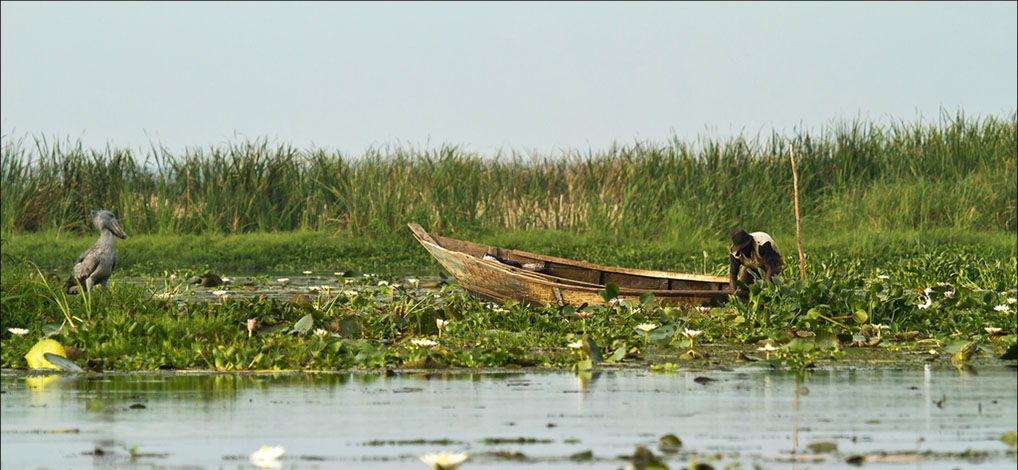
These birds rarely migrate and if they do so, then its because of habitat changes, the availability of food and inconveniences by humans. They are mostly attracted to areas with dense freshwater marshes, wetlands with undisturbed cyperus papyrus and reed beds of Typha and phragmites and they always want areas with mixed vegetation not just papyrus. Enjoy birding the shoebill while on your Uganda Safaris.

